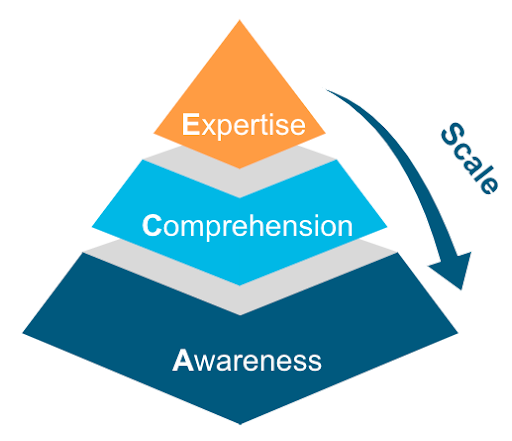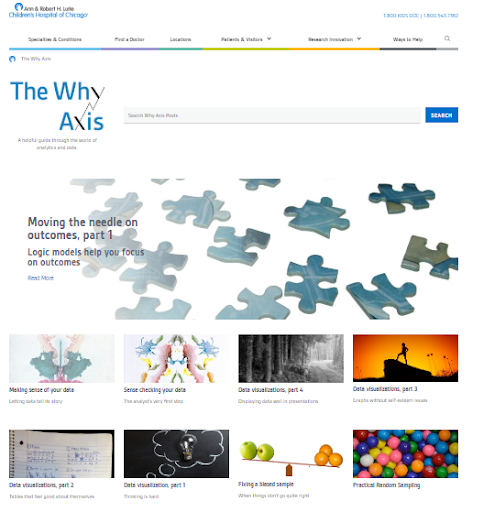When asked, “What has been your greatest challenge in achieving your objectives?”, 62% of data leaders surveyed for the CDO Agenda 2023 reported “Difficulty in changing organizational behaviors and attitudes.” More than half of respondents indicated an “absence of data-driven culture or data-driven decision-making.” Yet change is hard.
My New Year’s resolution was to read the stack of books by my bed, and continue to read more throughout the year (and not just the “beach read” diversions that I find myself gravitating to). I just finished Change: How to Make Big Things Happen by Damon Centola. The crux of the book’s argument is that big changes require networks, with high degrees of relevance and social redundancy.
Change is not spread like ideas. Big changes are not viral, or spread as fireworks or gunshots. They grow through a snowball effect, building through repeated exposure and strong ties. To drive change, it’s not enough to tell people about something; rather, you must show them that others who are important to them are doing it—and, more importantly, are deriving value from it. Whether it’s adopting new agricultural methods or reducing energy consumption or using data to inform decisions, social influence matters.
As more companies look to become data-driven, and change their modus operandi to focus more on the use of data, how do they drive these changes within their organizations? It’s not enough to have a leader with a megaphone or a few influencers promoting change. Driving sustainable change requires demonstrating value and growing support in key areas across the organization, and then spreading the word.
Develop a communications plan
So, what should be in your communications plan? How can you leverage the network effect across your organization to not only spread the word but also drive the change? To start with, it has to be a systematic plan. You do need to take a step back and map out whom you need to reach, with what messages, and how. Start with these questions:
- What form should the content take?
- What channels will you use to reach them?
- When should the content be delivered?
In my research at Forrester, I developed a framework for thinking about these audiences that started with what you were trying to achieve. The curriculum of ACES was designed to promote Awareness, Comprehension (or just better understanding), Expertise, and to Scale them across the organization with a feedback loop from the data experts to the others.

The idea was to focus not only on the data experts but to extend communication to the whole organization, “from shop floor to top floor.” After all, everyone has a role to play in either capturing, protecting, or using data. In fact, those who capture the data are often overlooked—the cashier, the field service technician, or the user of the microwave in the breakroom.

The next step is to decide what content is needed and how it should be disseminated. From formal training to casual exchanges, there are a lot of options and examples of effective methods. Here are a few examples:
- At the Anne and Robert H. Lurie Children’s Hospital of Chicago, the data team launched The Why Axis, a “helpful guide through the world of analytics and data.”
- “Lunch and learns” bring together people from across the organization to informally collaborate and learn, driving personal, team, and business development.
- In the CDO Agenda 2023, the CDAO of Regions Bank shares how his organization was invited to set up a booth outside a recent leadership meeting to display and describe its data products. The showcase generated excitement and demand for the group’s work.
- Gold-Age Movies
- B&W and Color TV Classics
- Hand-Picked Quality Films
- 1930s - 1980s Films
- Big Studio Favorites
- Used Book in Good Condition
- English (Publication Language)
- 112 Pages - 11/01/1993 (Publication Date) - Hal...
Keep in mind that language is important. At Kmart Australia, the data leadership team introduced a data translator role, and assigned one to each operational area. The idea was to combine data expertise and operational knowledge to identify opportunities. The result was a 400% growth in new ideas within three months, but also a three times increase in benefit per data use case. These translators, embedded in the business units, could roll up their sleeves and work side by side with the teams to implement the outcomes. There is more to communication than just words.

Focus more on show than tell
That brings us back to how to effectively drive change: the ‘S’ in ACES. Successful CDOs build broad communities to foster an insights-driven culture, and scale data and analytics activities.
The former CDO of Seattle Children’s Hospital called these extended team members “FDAs”—or “friends of data and analytics.” And, there are definitely friendlies out there. The CDO of an Egyptian bank reported so much interest in the bank’s data labs that it created a program to train people, and that community now boasts several hundred “data agent” members.
One of the things these communities do is evangelize the impact of the data. At Lurie Children’s Hospital, outreach programs included science-fair-like showcases sometimes held on Pi Day (March 14, because it is written 3.14 in the U.S.), highlighting results and offering pie as an incentive to join. Demonstrating the positive impact reinforces the benefits of change.
Encourage advocacy as professional development
Finally, promoting the data culture and educating others is an opportunity for professional development. According to a recent talent management study, 74% of employees say that a lack of professional development prevents them from reaching their goals. And a LinkedIn study reported that 94% of employees say they would stay longer at a company if they invested more in staff development. It’s not always a question of formal programs. A lot of professional development lies in opportunities to explain data and analytics concepts, present projects, and highlight value delivered to the organization.
- Womens Shirts Casual Summer T Shirts For Women...
- Plus Size Blouses For Women Cute Tops Flannel...
- Neon Shirts For Women White Tee Tops For Women...
- oversized button down shirts for women maternity...
- Womens Summer Clothes Womens Tops Dressy Casual...
- Y2K Tops Beach Outfits For Women Girls Fashion...
- work shirts for women strapless tops for women...
- crop tops for women sexy summer tops travel...
- black tops for women womens oversized tee shirts...
- casual tops for women trendy womens summer shirts...
- Purple Shirt For Women Shirts For Women Trendy...
- Sequin Tops For Women 80S Outfit For Women Party...
- Summer Clothes Boho Tops Going Out Top Women T...
- Workout Clothes Boho Clothes For Women T-Shirts...
- Women'S T-Shirts Graphic Tees Workout Clothes...
The bottom line: effective communication builds a stronger data culture and a stronger organization. If you’d like to hear more or share your own stories, don’t hesitate to reach out.






